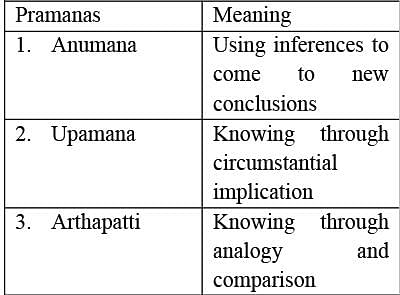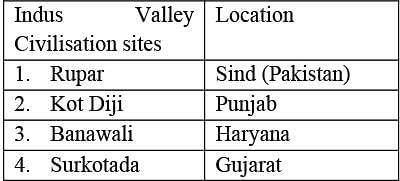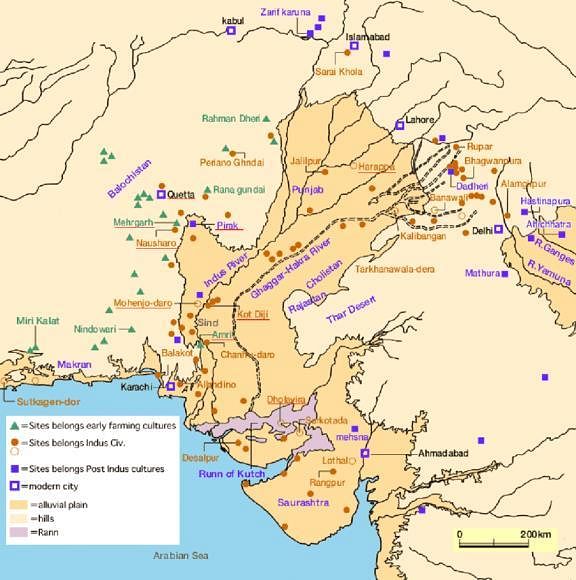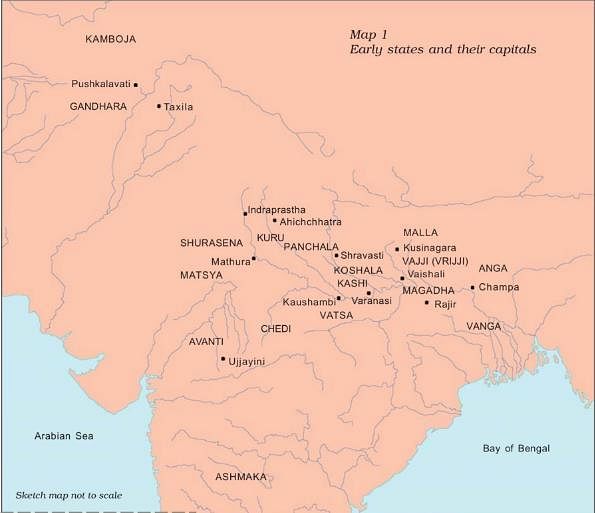Test: Ancient /Art and Culture - Italian MCQ
30 Questions MCQ Test - Test: Ancient /Art and Culture
With reference to the traditions of epistemology mentioned in the National Curriculum Framework of School Education (NCF-SE) 2023, consider the following pairs:

How many of the pairs given above are correctly matched?

How many of the pairs given above are correctly matched?
Consider the following Pairs:

How many of the above pairs are correctly matched?

How many of the above pairs are correctly matched?
| 1 Crore+ students have signed up on EduRev. Have you? Download the App |
Consider the following pairs:

How many of the above pairs are correctly matched?

How many of the above pairs are correctly matched?
Consider the following:
1. The entire world is animated.
2. Monastic existence is a necessary condition of salvation.
3. Karma shapes the cycle of birth and rebirth.
How many of the above are basic tenets of Jainism ?
Consider the following statements with reference to ‘The Petroleum and Natural Gas Regulatory Board’:
1. It was constituted under The Petroleum and Natural Gas Regulatory Board Act.
2. It works under the aegis of Ministry of Coal
3. It oversees construction of Pipelines for transportation of petroleum products
How many of the statements given above are incorrect?
Which among the following texts mentions sixteen Mahajanapadas of ancient India?
‘This National Park was designated as a World Heritage Site by UNESCO in 1985 and it was also declared as a Tiger Reserve in 2006. River Diphlu runs through the park and it hosts two-thirds of the world's Indian rhinoceroses’.Which of the following national parks is best described by the above paragraph?
With reference to the Harappan civilization, consider the following statements:
1. The Harappan civilization was discovered in 1920-21 following the excavations by D.R. Sahni at Mohenjodaro and by R.D. Banerjee at Harappa.
2. Saraswati River was one of the main focus of the distribution of settlements.
Which of the statements given above are correct?
Consider the following Mahajanapadas:
1. Vaisali
2. Vajji
3. Magadha
4. Sakya
Which of the above Mahajanapadas were republics (gaṇasanghas) according to Buddhist and Jaina texts?
With reference to the Maternity Benefits (Amendment) Act 2017, consider the following statements:
1. A commissioning mother shall be entitled to a maternity leave of twelve weeks.
2. Every establishment with fifty or more employees must have a creche facility.
Which of the statements given above are correct?
Which of the following statements are correct about King Bimbisara of Magadh?
1. He was a contemporary of Buddha and Mahavira.
2. He married the sister of Prasenjit, the king of Kosala, who brought in dowry the territory of Kashi.
3. He conquered Anga by defeating its ruler Brahmadatta and made Champa his capital.
Select the correct answer using the code given below:
The term ‘TeLEOS-2’ recently seen in the news is used in the context of which one of the following?
Consider the following:
1. Bimbisara
2. Chetaka
3. Mahavira
4. Mahapadama Nanda
Who among the above were the contemporaries of Gautama Buddha?
Consider the following statements with reference to Lumpy Skin Diseases:
1. It is a viral disease that affects cattle.
2. It can be transmitted by sanguinivorous insects.
3. No vaccination is available for its treatment.
How many of the statements given above are correct?
Which of the following organisations releases the ‘Logistic Performance Index’?
With reference to the King Ajatasatru of Magadh, consider the following statements:
1. He was the founder of the Shishunaga dynasty.
2. He fought with Prasenajit over the territory of Kasi and with Chetaka over the territory of Vaishali.
3. He built a fort on the confluence of river Ganga and river Son at Pataliputra or Patna.
How many of the statements given above are correct?
Who among the following rulers in ancient India assumed the title of ‘Ekarat’?
Consider the following statements:
1. There is a strict correlation between the level of planning and the size of a settlement in the Harappan civilization.
2. Dholavira featured unique and distinctive stone fortification walls with a dressed stone veneer, a feature unparalleled at other Harappan sites
3. In the Harappan civilization, large cities favoured burnt bricks, while small towns relied on sun-dried bricks, marking a significant contrast in building materials.
Which of the statements given above are correct?
Among the following kings, who was the hero of ancient Indian Sanskrit dramas, namely Svapnavasavadatta, Priyadarshika, and Ratnavali?
The doctrine of promissory estoppel was developed within the ambit of which one of the following?
Consider the following statements:
1. It had rich iron deposits near its capital Rajgir.
2. It had two strategic capitals, Rajgir and Pataliputra, that were surrounded by rivers or hills.
3. It had benefited from the rise of towns and the use of metal money.
Which of the above were the causes behind the Magadha's success in ancient India?
Consider the following statements:
1. The Chalukya kingdom’s prominence surged under Pulakesin II.
2. The Kharavela rose to power in Kalinga.
3. The expansion of the Kushana empire during Kanishka I’s Reign.
4. Vijayalaya founded the Imperial Chola Dynasty.
What is the correct chronological order of the above events from past to present?
Consider the following dynasties:
1. Sisunaga
2. Haryanka
3. Nanda
Which of the following is the correct chronological sequence of the above dynasties from past to present?
The bilateral air exercise ‘Cope India 23’ is an exercise between which one of the following countries?
Consider the following:
1. Freedom from Regulations
2. Cost effectiveness
3. Diverse Investment Options
4. Limited Legal Protections
How many of the above are advantages of the ‘Dabba trading’?
With reference to Harappan trade, consider the following pairs:

How many of the above pairs are correctly matched?
Consider the following statements with reference to cultural impacts of Indo-Iranian contact:
1. Punch marked coins came into use in India as a result of contact with Iran.
2. Kharosthi script which unlike Arabic is written from right to left was brought to India by Iranian scribes.
3. Ashokan pillars drew inspiration from Iranian pillars.
How many of the above mentioned statements are correct?
Consider the following statements: :
1. Kosalas were ruling Magadha when Alexander invaded India.
2. Battle of the Hydaspes was fought between Alexander and King Ambhi of Taxila.
3. Porus along with King Ambhi, defeated Alexendar and ended his Indian conquest.
How many of the statements given above are incorrect?
Consider the following statements:
1. The primary reason for Iranian invasion of India in 6th century B.C. was to spread Iranian culture and religion across India.
2. After Iranian invasion India recognised the importance of having a strong and unified empire to defend against foreign invasions.
Which of the statements given above are incorrect?
Consider the following countries:
1. Uzbekistan
2. Kazakhstan
3. Tajikistan
4. Kyrgyzstan
5. Azerbaijan
How many of the above are part of the C + C5 grouping?



















